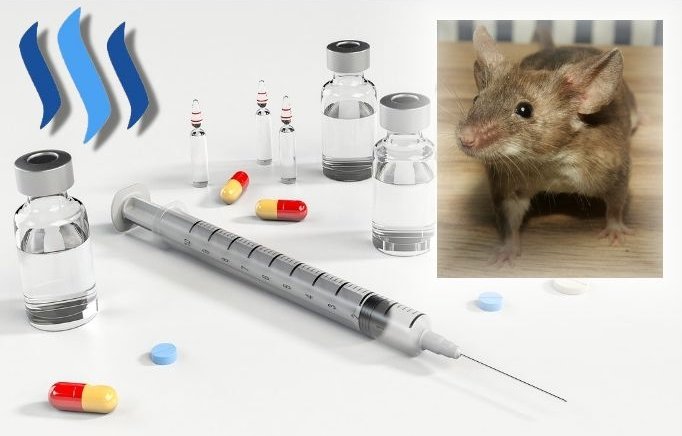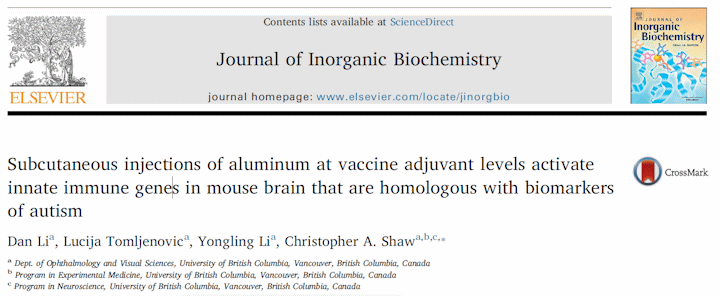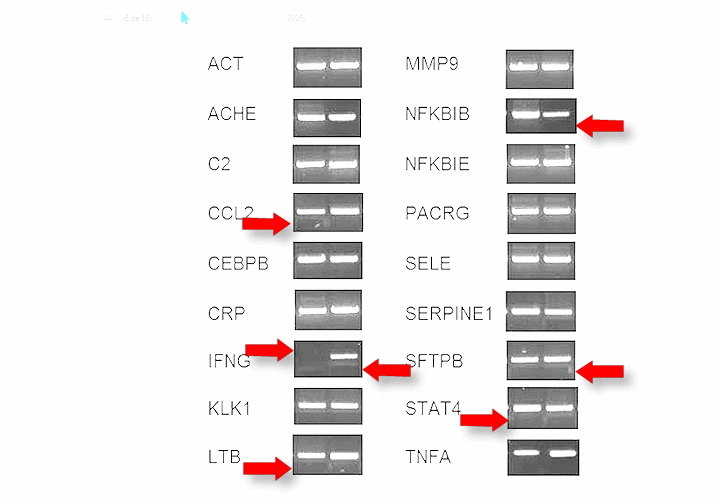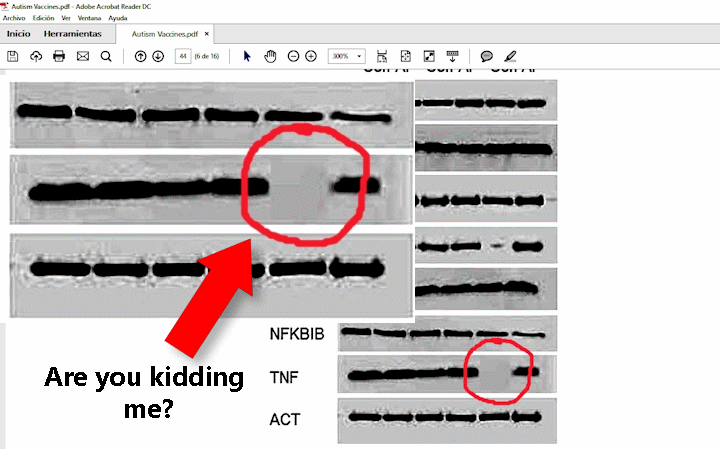
A couple days ago, the following article firmly took roots in both the main and the health trending section of Steemit:

Whenever topics like this come up, the question of being “open minded enough” to accept the information provided always becomes a dividing hurdle that excludes everyone who doesn’t agree with what is being said (resulting on additionally being labeled as a troll or as a brainwashed person, apparently).
However, being open minded doesn’t mean believing in any sort of subversive theories that go against the mainstream paradigm; being open minded means to be able to put your prejudices and assimilated beliefs aside while you look at something, making an effort to analyze it for what it is. Afterwards, you might use your judgement based on the evidence provided to conclude whether the information presented holds truth to it or not. In summary, being close minded just means that you reject ideas a priori, before even making the effort to first listen to it and what it entails.
Ironically, just a quick look at the comment section of the article reveals a lot of blind acceptance: since it already lines up with their beliefs, people are taking for granted that the information provided is accurate and that the claim made is actually valid without bothering to confirm with the source. In fact, I can bet my entire tea collection–which I need for daily survival– that not one of them actually read the article (or fully understood what was being said in it). So much for “always questioning what you are being told and informing yourself before you make potentially life-altering decisions”.
But guess what? I did read it! Want to know what I found?
Within the frame of an open mind, let’s take a look at the article, which is available here. Firstly, let’s look at what the title tells us:

The first part tells us that they injected aluminum under the skin of mice (subcutaneous) in concentrations similar to those found in vaccine adjuvants. The second part of the sentence, says that by doing that, they observed that certain genes or proteins (biomarkers) homologous to those associated with autism were activated. Alright. Let’s look at what homologous means:
Homologous:
1) Showing a degree of similarity (e.g. in position, structure, function or characteristics) that may indicate a common origin.
2) Having similar structure and anatomical position (but not necessarily the same function) in different organisms suggesting a common ancestry or evolutionary origin.
Source: http://www.biology-online.org/dictionary/Homologous
This notion introduces a first word of caution: not all findings in mice directly translate to human physiology. In fact, a very small portion of them actually get successfully translated into efficient treatments for humans [1][2][3]. This is due to the self-evident fact that, as much as we have similarities as mammals, a human is vastly different from a mouse.
Why experiment in mice, then? Because genetic analysis have shown that they do hold a high degree of similarity in their gene code in comparison to ours [3], and because ethical concerns prevents us from directly experimenting on humans. Therefore, mice research is often the best initial approach we have, however the results obtained should be met with the appropriate reservations.
There is a chance, of course, that you are one of those people who don’t believe in evolution, in which case, congratulations! You can immediately discard this article as any proof since making experiments in mice to show an equivalent effect in humans would make absolutely zero sense. Otherwise, let’s continue…
Now, I must admit I found it odd that this work was published in the Journal of Inorganic Biochemistry instead of a Biology/Medicine journal (since the main topic of this study is a biological process related to human disease), but let's put that aside for a moment. Theirs is a provocative title that piqued my scientific curiosity. Maybe they did find something interesting that we should take into consideration. Let’s take a look at the abstract, which summarizes the findings of the work.
Autism is a neurobehavioral disorder characterized by immune dysfunction. It is manifested in early childhood, during a window of early developmental vulnerability where the normal developmental trajectory is most susceptible to xenobiotic insults. Aluminum (Al) vaccine adjuvants are xenobiotics with immunostimulating and neurotoxic properties to which infants worldwide are routinely exposed. To investigate Al′s immune and neurotoxic impact in vivo, we tested the expression of 17 genes which are implicated in both autism and innate immune response in brain samples of Al-injected mice in comparison to control mice. Several key players of innate immunity, such as cytokines CCL2, IFNG and TNFA, were significantly upregulated, while the nuclear factor-kappa beta (NF-κB) inhibitor NFKBIB, and the enzyme controlling the degradation of the neurotransmitter acetylcholine (ACHE), were downregulated in Al-injected male mice. Further, the decrease of the NF-κB inhibitor and the consequent increase in inflammatory signals, led to the activation of the NF-κB signaling pathway resulting in the release of chemokine MIP-1A and cytokines IL-4 and IL-6. It thus appears that Al triggered innate immune system activation and altered cholinergic activity in male mice, observations which are consistent with those in autism. Female mice were less susceptible to Al exposure as only the expression levels of NF-κB inhibitor and TNFA were altered. Regional patterns of gene expression alterations also exhibited gender differences, as frontal cortex was the most affected area in males and cerebellum in females. Thus, Al adjuvant promotes brain inflammation and males appear to be more susceptible to Al′s toxic effects.
Translated into non-scientific jargon, the main message is this:
They observed that in the mice injected with the Aluminum dose, a set of genes signaling for inflammation were activated as well as the NF-kB pathway (more on this later). They said that this resulted in cholinergic activity altered in a similar way to that observed in autism. Oh, and they didn’t observed the same effect in female mice. So far so good…
Now let’s see how they did it:
Looking at the methods section and the figures they provide, they mostly used very basic methods for DNA and protein detection. Some would even claim such methods are a bit outdated, since there are much better methods available using more modern equipment and techniques that have become the standard nowadays due to the high quality data they produce.
We don’t do this because we want to look fancy, but because the new methods are much more accurate, reliable and provide a more detailed output that is closer to what is actually happening in the event observed.
PCR is a method that makes copies of DNA with each cycle; these copies multiply in an exponential manner with each cycle, so you can end up with thousands or even millions of copies from a few initial copies of the gene being amplified. Scientists do this to be able to better observe the genes they are looking for, since in the original sample the genes could be present in a quantity that would be too small to be detected or compared.
However, one should be cautious when performing this experiment, since performing too many cycles can artificially increase the representation of your gene by saturating its production, masking any real biological effects. This is a concern in this study since the methods state that they used 30 cycles of amplification which is longer than standard procedure.
So let’s look at the gels showing the genes of interest. The products obtained by using this PCR copying and amplifying method are then observed by placing them on a gel were they get separated using an electric gradient. DNA has a negative charge so it “travels” towards the positive charge across the gel, and since the gel used restricts the mobility of bigger particles (meaning smaller particles fit easier through the pores in the gel and thus travel faster towards the positive end) it is possible to separate them by sizes. You identify your product (gene) of interest by looking for it at the expected molecular weight of it.
Here I noticed some strange irregularities present in the gels shown. Namely, there seem to be cutouts or bluntly delimited areas with different opacity to the rest of the lane shown, which could be indicative of parts of the picture being obscured or erased to cover up undesired bands:

When too many cycles of DNA copying have been performed, you might end up with unspecific products being also copied, which will show up in the gel as well as your product of interest, making it more difficult to interpret.
However, in this article we are only provided with cutouts of the individual bands for every gene, and we cannot look at the entire gel to see if the experiment was performed accurately or not.
I spent my entire master’s degree and part of my PhD doing this precise kind of experiments so I am familiar with what to look for in them, their interpretation and the myriad of variations one can have in different gels/blots. After looking at this figure, something again looked dodgy. I thought it was odd that the band of detected protein of TNF just suddenly disappeared like that. Upon closer inspection, it looked like there was a faint border delimiting a region with a slightly different opacity than the rest of the blot (just like in the previous figure). Then, I tilted my computer screen and, lo and behold! This is what they did (I played with the contrast a bit to make it more visible, but you can clearly see it in the original article):

So they just basically cut up and pasted a square shaped object to cover up the inconvenient band of protein they didn’t want to show!
Quoting one of my advisor's favorite sayings: That is not how science works! You can’t just (literally) cover up the results that don’t support your hypothesis and then make an analysis out of it. I don’t think I have to specify why fabricating your results by manipulating your evidence is not only ethically wrong but also invalid for the production of reliable, reproducible scientific data.
After looking at this blatant (and sloppy) data manipulation, it is certainly hard to believe that subsequent data analysis was made in a rigorous, honest and accurate way. But still, let's look a bit further into the article:
Does the evidence sustain the claims?
We should answer the question: are the genes selected reliable biomarkers of autism? Are they specific enough so their detection means that we are witnessing the onset of the disease? NF-kB is one of the cardinal pathways regulating survival, inflammation and cell homeostasis:
In vertebrates, NF-κB is activated by over 150 different stimuli, such as stress, cytokines, free radicals, ultraviolet irradiation, oxidized LDL and bacterial or viral antigens. In turn, there is evidence that active NF-κB participates in the control of transcription of more than 400 genes. These genes include cytokines, chemokines and their modulators, immunoreceptors, proteins involved in antigen presentation, cell adhesion molecules, acute phase proteins, stress response proteins, cell-surface receptors, regulators of apoptosis, growth factors, ligands and their modulators, early response proteins, transcription factors and regulators, and enzymes, controlling several phenomena such as inflammation as well as innate and adaptive immune response.
Source: [4]
Now, let’s imagine for a moment that their findings were actually real and not the product of the Photoshop (or rather MS Paint) extravaganza that I showed above. Even then, since the genes selected and the NFk-B pathway are involved in so many things in the cell, it suffices to say that observing a bit over a dozen genes being “activated” after the Aluminum injection is a weak piece of evidence, because it is so general that could mean so many things, and there is not an experiment shown here that convincingly delimits or pinpoints it to a particular event (in this case, the starting phase of autism) while excluding the others. The genes tested are not even directly implicated in autism, but are part of a general cascade of signals within the cell that serves multiple purposes.
To give you an idea, I myself use this genes as markers in my own scientific study, and I am doing nothing related to autism (my work is related to mechanisms for stopping growth in cancer tumors). This selection of genes is related to the general process of inflammation – you can even see it for yourself in the handy table they included in the article about the function of each gene.
I was thinking of writing a breakdown of each individual point, but I think this post would approach “nobody is going to read all this” territory so I will keep it brief (however, feel free to bring any individual point you would like to discuss about the article to the comment section).
In short, my main gripe with this article (besides the fraudulent data) is that they have very thin and unconvincing evidence to support their rather bold claims. Basically, they constantly fall on the trap of assuming that a singular correlation indicates causality. Example: they measure the activity of one enzyme that is related to autism (as well as many other physiological processes!) and claim this is proof that their animal model is consistent with observations of patients affected with autism! A few cherry-picked examples that sort-of fit something that you want to prove is not a solid test that your hypothesis is right.
That’s akin to spending a few days fasting and feeling fatigued, thirsty and having limb numbness and concluding you most likely have diabetes – yes, the symptoms overlap with those of the sickness, but these also are symptoms that are present in many other situations without implying the onset of a degenerative and irreversible ailment. In this example, this symptoms would be related to sugar depletion due to lack of food intake, and reversed as soon as you had your next meal.
In conclusion:
- There is clear evidence of data manipulation/fabrication in this article, which puts in serious question whether any of the presented data is actually valid.
- Even if the data shown was valid, the evidence presented is way too general and could apply to a million other things besides autism and they don’t provide further experiments to narrow it down to it.
- Animal studies can help shed some light on the physiology of humans, but findings are not directly applicable to humans in the majority of cases, so one must be cautious about overstating findings.
- Whenever there is a new study claiming to provide support for a provocative claim against the current paradigm, truly do your research (do not only look at the title of the article and take the author’s word for it!) and look into it to see if the evidence found is solid enough to stand a critical test, especially if this aligns wonderfully with your pre-established beliefs. Think about it this way: if the information provided is not what is purported to be and you realize it, then you would not “contaminate” your frame of knowledge by assimilating erroneous ideas, but if it turns out to be truthful and reproducible then it will give your provocative idea a much more solid ground to stand on.
- In short: The scientific consensus so far about the effect of Aluminum is that it is not harmful in the way it is used currently as a vaccine adjuvant (based on a significant amount of scientific data). This article doesn’t provide neither sufficient nor reliable information to challenge that notion.
Bonus:
If you are in the mood to take a quick look at a variety of scientific evidence supporting the harmlessness of adjuvants like Aluminum in vaccines, in this page you can find a compilation of Scientific articles and the results they reported (summarized in a handy table for your viewing pleasure):
Epilogue:
After all this analysis, I felt curious about these authors and did a quick googling to see what else they have been working on. (Un)surprisingly, turns out they have already been previously flagged for questionable scientific behavior, fraudulent reports and results that are not replicable.
Some other people have also wrote rebuttals of their published articles, exposing manipulation of data, questionable scientific methods and conclusions unsupported by their evidence, as you can see here, here, and here.
I didn’t want to mention this in the beginning of the post, since I wanted the readers to follow up the dissection of the article with a more unbiased mindset. In the light of this info, some things like the outdated equipment/techniques used and the odd choice of journal start to make sense; I doubt any serious institution would support and fund someone with such a reputation of shoddy research and documented scientific misconduct.

This article was written in response to @suesa’s initiative to write about a misconception that we wanted to dispel using the power of science and the evidence available. So, this is my entry, I hope you found it interesting!
----------------------------------------------------------------------------
References:
[1] Are animal models predictive for humans? https://www.ncbi.nlm.nih.gov/pmc/articles/PMC2642860/
[2] Animal experiments scrutinised: systematic reviews demonstrate poor human clinical and toxicological utility. https://www.ncbi.nlm.nih.gov/pubmed/18288428
[3] Comparing the Mouse and Human Genomes https://www.nih.gov/news-events/nih-research-matters/comparing-mouse-human-genomes
[4] Charting the NF-κB Pathway Interactome Map https://www.ncbi.nlm.nih.gov/pmc/articles/PMC3293857/
-------------------------------------
Image sources: First one from Pixabay, the rest were taken from the article in question.
